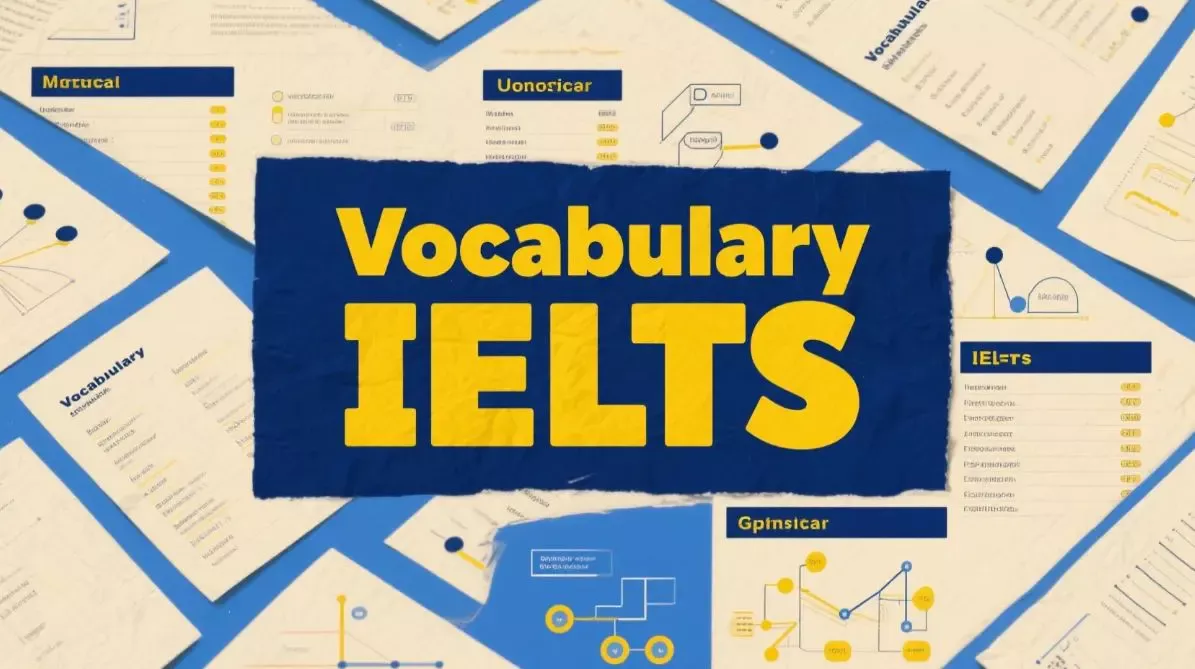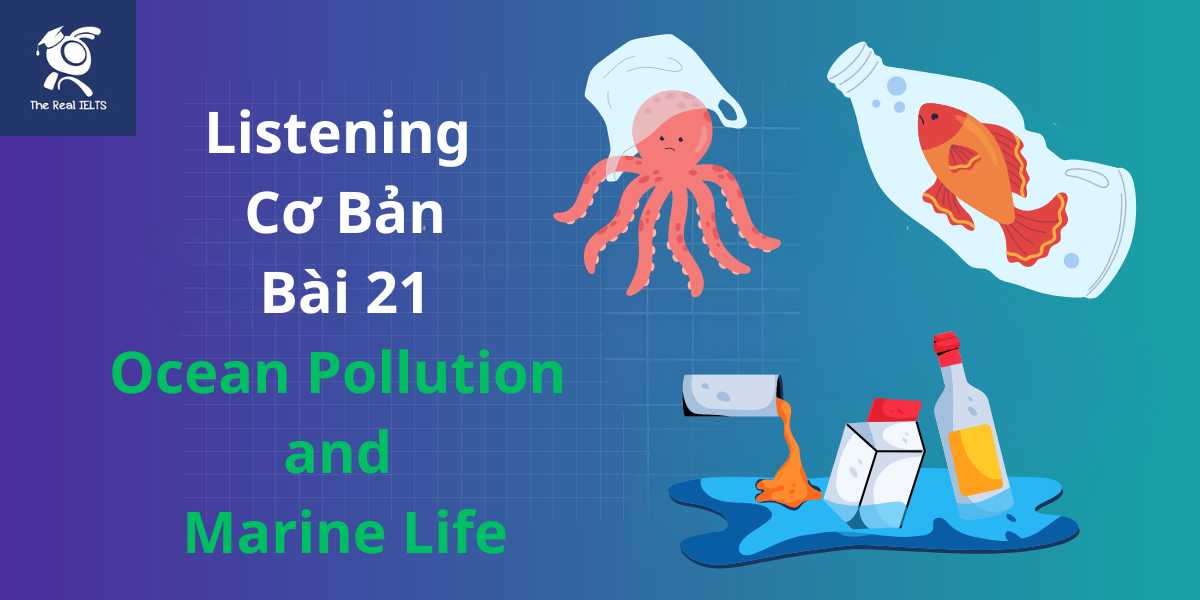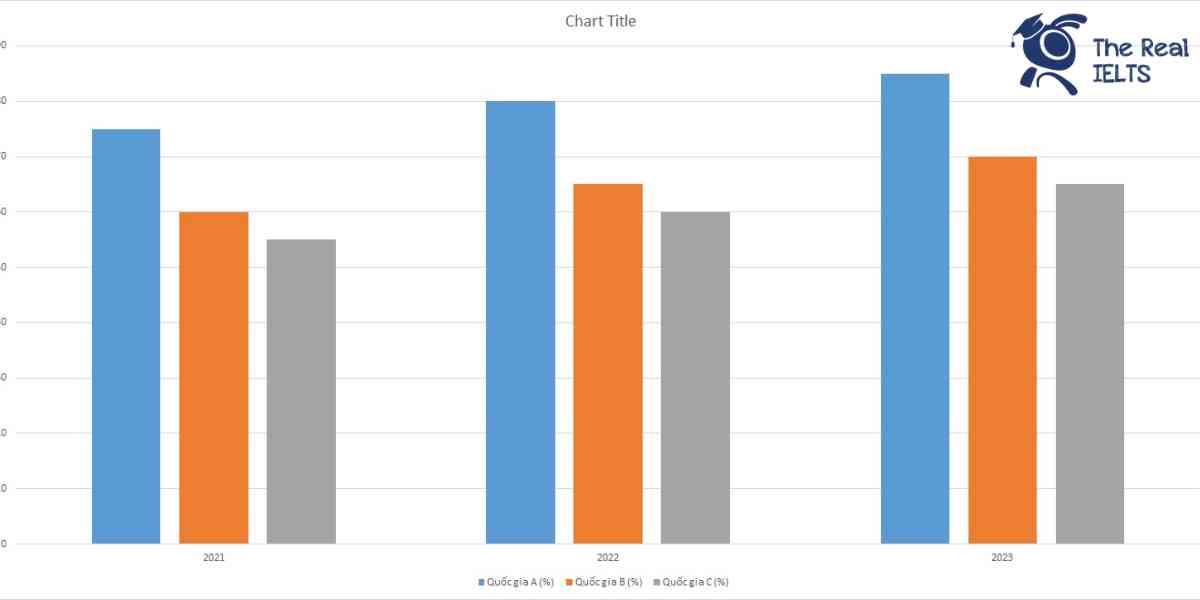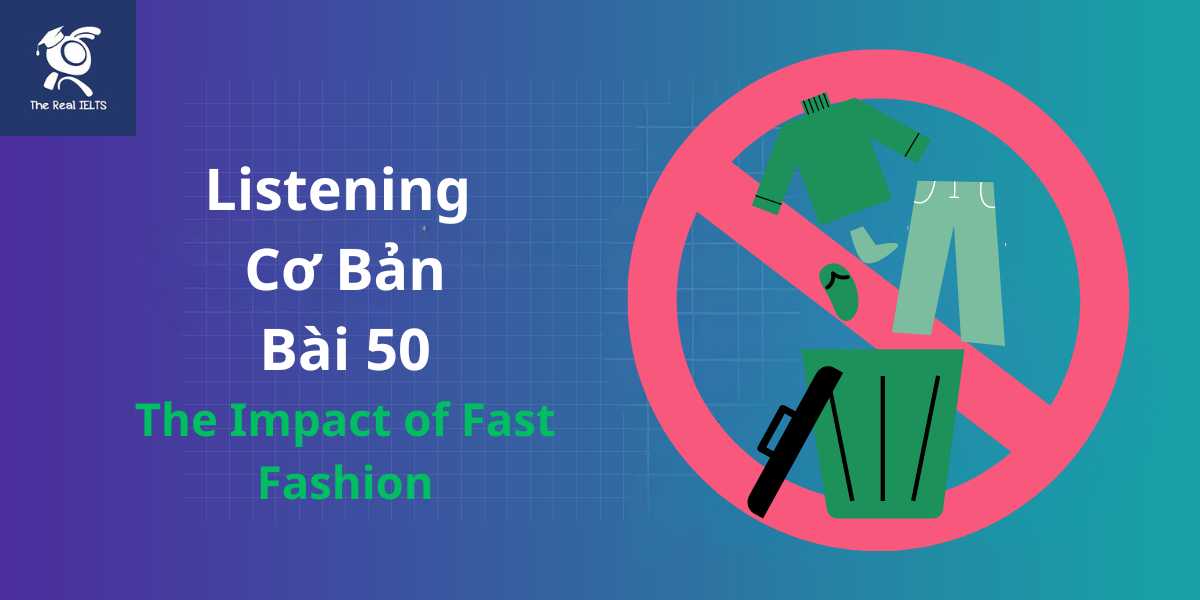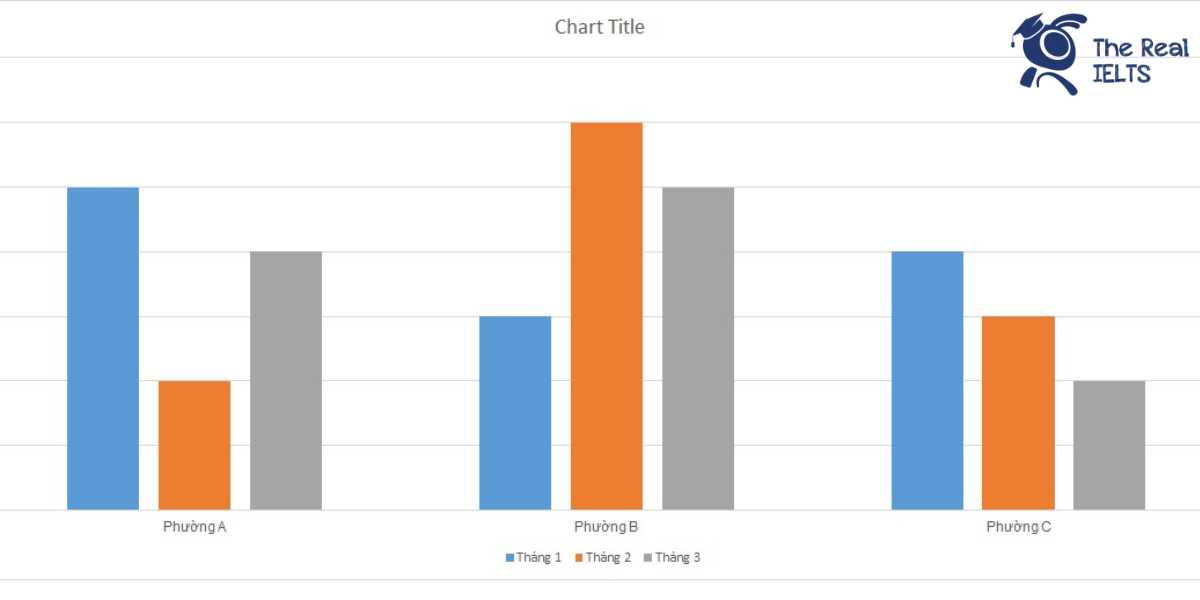Kỹ năng đọc hiểu đóng vai trò cốt lõi trong kỳ thi IELTS, nơi người học cần xử lý nhanh các văn bản học thuật phức tạp. IELTS Reading đòi hỏi không chỉ vốn từ vựng phong phú mà còn khả năng phân tích, suy luận và quản lý thời gian hiệu quả. Với ba đoạn văn và 40 câu hỏi trong 60 phút, người thi phải rèn luyện chiến lược đọc lướt, đọc sâu và xác định thông tin chính xác để tối ưu hóa điểm số.
Đọc thêm: IELTS Reading 11 dạng bài phần 1
Urban Green Spaces and Their Benefits
Urban green spaces, such as parks, gardens, and tree-lined streets, play a vital role in improving the quality of life in cities. These areas provide residents with opportunities for recreation, relaxation, and social interaction. Studies show that spending time in green spaces can reduce stress and improve mental well-being. For example, a 2019 study found that people who spent at least 20 minutes daily in parks reported lower levels of anxiety. Moreover, green spaces help combat air pollution by absorbing carbon dioxide and releasing oxygen. Trees and plants also filter harmful particles from the air, contributing to cleaner urban environments.
In addition to environmental benefits, green spaces encourage physical activity. Parks with walking paths or sports facilities motivate people to exercise, which can reduce the risk of obesity and heart disease. Cities with more green spaces often see higher community engagement, as these areas host events like festivals or outdoor classes. However, maintaining urban green spaces can be costly, requiring regular upkeep and investment. Some cities struggle to balance these expenses with other priorities, such as infrastructure development.
Despite challenges, the demand for green spaces is growing as urban populations increase. City planners are now prioritizing the creation of pocket parks—small green areas in densely populated neighborhoods. These spaces maximize limited land while providing similar benefits to larger parks. As cities continue to grow, green spaces remain essential for sustainable urban living.
Reading Questions
- Urban green spaces help reduce stress and improve mental health.
- All cities can easily afford to maintain their green spaces.
- Pocket parks are designed for areas with limited available land.
- Green spaces are the primary source of oxygen in urban areas.
- Community events in green spaces increase social interaction.
Answers
- True
- False
- True
- False
- True
Explanations
- True: Đoạn văn đề cập rằng dành thời gian ở không gian xanh có thể giảm căng thẳng và cải thiện sức khỏe tinh thần, được hỗ trợ bởi nghiên cứu năm 2019 về việc giảm lo âu khi ở công viên ít nhất 20 phút mỗi ngày.
- False: Đoạn văn nói rằng việc duy trì không gian xanh có thể tốn kém và một số thành phố gặp khó khăn trong việc cân bằng chi phí này với các ưu tiên khác, nên không phải tất cả các thành phố đều dễ dàng chi trả.
- True: Đoạn văn giải thích rằng các công viên nhỏ (pocket parks) được tạo ra ở các khu vực đông dân cư với diện tích đất hạn chế, nhằm tối đa hóa lợi ích trên không gian nhỏ.
- False: Đoạn văn chỉ nói rằng cây cối hấp thụ carbon dioxide và thải oxy, góp phần làm sạch không khí, nhưng không nói rằng không gian xanh là nguồn oxy chính trong khu vực đô thị.
- True: Đoạn văn đề cập rằng các không gian xanh tổ chức các sự kiện như lễ hội hoặc lớp học ngoài trời, điều này làm tăng sự gắn kết cộng đồng, đồng nghĩa với tăng tương tác xã hội.
The Impact of Urban Green Spaces
Urban green spaces, such as parks, gardens, and tree-lined streets, play a crucial role in enhancing the quality of life in cities. These areas provide residents with opportunities for recreation, relaxation, and social interaction, fostering a sense of community. Studies have shown that access to green spaces can improve mental health by reducing stress and anxiety levels. For instance, a 2019 study found that individuals who spent at least 20 minutes daily in a park reported significantly lower levels of cortisol, a stress hormone. Additionally, green spaces contribute to environmental sustainability by improving air quality, reducing urban heat, and supporting biodiversity. Trees and plants absorb carbon dioxide and release oxygen, helping to mitigate climate change. However, the availability of green spaces is often uneven, with lower-income neighborhoods frequently lacking adequate access. This disparity can exacerbate social inequalities, as wealthier areas tend to have more parks and greenery. City planners are increasingly recognizing the need to address this issue by integrating green spaces into urban development projects. Initiatives like rooftop gardens and vertical forests are gaining popularity in densely populated cities. Despite these efforts, challenges such as limited land availability and high maintenance costs remain significant barriers to expanding urban greenery.
Reading Questions
- What is one benefit of urban green spaces mentioned in the passage?
A. Increased property prices
B. Improved mental health
C. Higher employment rates
D. Reduced public transportation costs - According to the passage, how do green spaces contribute to environmental sustainability? (Choose 2 correct answers)
A. They improve air quality.
B. They reduce urban heat.
C. They increase energy consumption.
D. They support biodiversity. - What did the 2019 study find about spending time in parks?
A. It increases physical strength.
B. It lowers cortisol levels.
C. It improves academic performance.
D. It reduces social interaction. - Why do lower-income neighborhoods often have fewer green spaces?
A. Residents prefer urban landscapes.
B. There is a lack of community interest.
C. There is unequal distribution of resources.
D. City planners prioritize commercial areas. - What are some challenges to expanding urban green spaces? (Choose 2 correct answers)
A. Limited land availability
B. Lack of public interest
C. High maintenance costs
D. Insufficient government policies
Answers
Câu 1: B
Câu 2: A và D
Câu 3: B
Câu 4: C
Câu 5: A và C
Explanations
Câu 1: B
- Giải thích: Đoạn văn nêu rõ rằng việc tiếp cận không gian xanh có thể cải thiện sức khỏe tinh thần bằng cách giảm căng thẳng và lo âu (“improve mental health by reducing stress and anxiety levels”).
- Lý do loại các đáp án khác:
- A: Không đề cập đến việc tăng giá bất động sản.
- C: Không nhắc đến việc làm.
- D: Không liên quan đến chi phí giao thông công cộng.
Câu 2: A và D
- Giải thích: Đoạn văn liệt kê các lợi ích môi trường của không gian xanh, bao gồm “improving air quality” (cải thiện chất lượng không khí) và “supporting biodiversity” (hỗ trợ đa dạng sinh học).
- Lý do loại các đáp án khác:
- B: Mặc dù đoạn văn nhắc đến “reducing urban heat”, câu hỏi yêu cầu chọn 2 đáp án, và A, D được nêu rõ ràng hơn.
- C: Không gian xanh không làm tăng tiêu thụ năng lượng, điều này không được đề cập.
Câu 3: B
- Giải thích: Nghiên cứu năm 2019 được nhắc đến trong đoạn văn cho thấy những người dành 20 phút mỗi ngày trong công viên có mức cortisol (hormone căng thẳng) thấp hơn đáng kể (“lower levels of cortisol”).
- Lý do loại các đáp án khác:
- A, C, D: Không có thông tin về sức mạnh thể chất, thành tích học tập, hoặc giảm tương tác xã hội.
Câu 4: C
- Giải thích: Đoạn văn chỉ ra rằng các khu vực thu nhập thấp thường thiếu không gian xanh do sự phân phối không đồng đều (“the availability of green spaces is often uneven”), dẫn đến bất bình đẳng xã hội.
- Lý do loại các đáp án khác:
- A, B: Không đề cập đến sở thích của cư dân hoặc thiếu quan tâm cộng đồng.
- D: Không nói rằng các nhà quy hoạch ưu tiên khu vực thương mại.
Câu 5: A và C
- Giải thích: Đoạn văn nêu rõ hai thách thức trong việc mở rộng không gian xanh là “limited land availability” (thiếu quỹ đất) và “high maintenance costs” (chi phí bảo trì cao).
- Lý do loại các đáp án khác:
- B: Không nhắc đến thiếu sự quan tâm của công chúng.
- D: Không đề cập đến chính sách chính phủ không đủ.
The Impact of Urban Green Spaces
In recent years, urban green spaces such as parks and community gardens have gained significant attention for their role in enhancing city life. Many city planners argue that green spaces improve mental health by providing residents with areas for relaxation and recreation. A study conducted in London found that individuals living near parks reported lower levels of stress compared to those in areas with limited greenery. Furthermore, environmentalists claim that urban green spaces help combat air pollution, as trees and plants act as natural filters, absorbing harmful pollutants. However, some critics point out that maintaining these spaces can be costly, diverting funds from other essential services like public transport. In response, supporters argue that the long-term benefits, such as reduced healthcare costs due to improved public health, outweigh the initial expenses. Additionally, green spaces are said to foster social cohesion, as they provide venues for community events and interactions. In Singapore, for instance, urban gardens have been credited with strengthening community bonds among diverse groups. Despite these advantages, some residents believe that green spaces attract noise and litter, negatively affecting nearby neighborhoods. City officials, however, maintain that proper management can mitigate such issues, ensuring that green spaces remain valuable assets for urban populations.
Questions
- City planners believe that urban green spaces contribute to better mental health.
- The London study showed that green spaces reduce air pollution in urban areas.
- Critics argue that the cost of maintaining green spaces is justified by their benefits.
- Urban gardens in Singapore have helped improve air quality.
- City officials agree that proper management can address problems like noise and litter in green spaces.
Answers
- Yes
- No
- No
- Not Given
- Yes
Explanations
- Câu trả lời: Yes
Giải thích: Đoạn văn nêu rõ rằng “Many city planners argue that green spaces improve mental health by providing residents with areas for relaxation and recreation.” Điều này cho thấy các nhà quy hoạch thành phố tin rằng không gian xanh góp phần cải thiện sức khỏe tinh thần, phù hợp với câu hỏi. - Câu trả lời: No
Giải thích: Câu hỏi đề cập rằng nghiên cứu ở London cho thấy không gian xanh giảm ô nhiễm không khí. Tuy nhiên, đoạn văn chỉ nói rằng nghiên cứu ở London phát hiện “individuals living near parks reported lower levels of stress,” không đề cập đến việc giảm ô nhiễm không khí. Quan điểm về ô nhiễm không khí được environmentalists đề cập, không phải nghiên cứu ở London, nên câu trả lời là No. - Câu trả lời: No
Giải thích: Câu hỏi cho rằng các nhà phê bình đồng ý chi phí duy trì không gian xanh được biện minh bởi lợi ích của chúng. Nhưng đoạn văn nói rằng “some critics point out that maintaining these spaces can be costly, diverting funds from other essential services like public transport,” cho thấy họ không đồng ý với lợi ích vượt trội so với chi phí, nên câu trả lời là No. - Câu trả lời: Not Given
Giải thích: Đoạn văn đề cập rằng ở Singapore, “urban gardens have been credited with strengthening community bonds among diverse groups,” nhưng không có thông tin nào về việc các khu vườn này cải thiện chất lượng không khí. Do đó, thông tin này không được đề cập, dẫn đến câu trả lời là Not Given. - Câu trả lời: Yes
Giải thích: Đoạn văn nêu rõ rằng “City officials, however, maintain that proper management can mitigate such issues, ensuring that green spaces remain valuable assets for urban populations.” Điều này cho thấy các quan chức thành phố đồng ý rằng quản lý tốt có thể giải quyết các vấn đề như tiếng ồn và rác, phù hợp với câu hỏi.
The Impact of Urban Green Spaces
Paragraph A
Urban green spaces, such as parks and gardens, are increasingly vital in modern cities. As urban populations grow, these areas provide essential opportunities for recreation and relaxation. Studies show that access to green spaces can reduce stress levels by up to 20%, offering residents a chance to escape the fast-paced city environment. Beyond mental health benefits, these spaces encourage physical activities like jogging or cycling, which improve overall well-being.
Paragraph B
The environmental impact of urban green spaces is significant. Trees and plants in these areas act as natural air filters, removing pollutants and producing oxygen. A single mature tree can absorb around 48 pounds of carbon dioxide annually, helping to combat climate change. Additionally, green spaces reduce the urban heat island effect, lowering city temperatures by as much as 5°C in summer months, which enhances living conditions.
Paragraph C
Despite their benefits, maintaining urban green spaces presents challenges. Limited city budgets often restrict funding for park upkeep, leading to neglected facilities. In some areas, green spaces are reduced to make way for commercial developments, shrinking available recreational areas. Public awareness campaigns have been launched to address these issues, emphasizing the importance of preserving these spaces for future generations.
Paragraph D
Innovative solutions are emerging to expand urban green spaces. Some cities are transforming vacant lots into community gardens, fostering social bonds among residents. Others are integrating green roofs on buildings, which not only enhance aesthetics but also improve energy efficiency. These initiatives demonstrate a growing commitment to balancing urban development with environmental sustainability.
Questions (Matching Information)
- A statistic about the mental health benefits of green spaces.
- The role of green spaces in reducing city temperatures.
- Efforts to raise awareness about preserving green spaces.
- An example of how cities are creating new green areas.
- A specific environmental benefit provided by trees in green spaces.
Answers
- A
- B
- C
- D
- B
Explanations (Vietnamese)
- Đáp án: A
Giải thích: Câu hỏi yêu cầu tìm số liệu về lợi ích sức khỏe tinh thần của không gian xanh. Trong đoạn A, có thông tin “Studies show that access to green spaces can reduce stress levels by up to 20%”, đây là số liệu cụ thể về lợi ích sức khỏe tinh thần, phù hợp với mô tả. - Đáp án: B
Giải thích: Câu hỏi đề cập đến vai trò của không gian xanh trong việc giảm nhiệt độ thành phố. Đoạn B nêu rõ “green spaces reduce the urban heat island effect, lowering city temperatures by as much as 5°C in summer months”, trực tiếp trả lời mô tả này. - Đáp án: C
Giải thích: Câu hỏi hỏi về nỗ lực nâng cao nhận thức về việc bảo vệ không gian xanh. Đoạn C đề cập đến “Public awareness campaigns have been launched to address these issues”, cho thấy các chiến dịch nâng cao nhận thức, phù hợp với mô tả. - Đáp án: D
Giải thích: Câu hỏi yêu cầu ví dụ về cách các thành phố tạo ra không gian xanh mới. Đoạn D nói về “transforming vacant lots into community gardens” và “integrating green roofs on buildings”, đây là các ví dụ cụ thể về việc tạo không gian xanh mới. - Đáp án: B
Giải thích: Câu hỏi hỏi về lợi ích môi trường cụ thể của cây cối trong không gian xanh. Đoạn B nêu “A single mature tree can absorb around 48 pounds of carbon dioxide annually”, đây là lợi ích môi trường cụ thể, khớp với mô tả.
The Rise of Urban Farming
Reading Passage
(A) Urban farming, once a niche activity, has grown into a global movement. In cities like Tokyo, New York, and London, rooftops and vacant lots are being transformed into vibrant green spaces. This trend responds to the increasing demand for fresh, locally grown produce. Urban farms not only provide food but also foster community engagement, as residents come together to plant, tend, and harvest crops.
(B) The environmental benefits of urban farming are significant. By growing food locally, cities reduce the carbon footprint associated with transporting produce from rural areas. Additionally, urban farms help mitigate the urban heat island effect, as plants absorb heat and provide shade. Green roofs, a popular form of urban farming, also improve air quality by filtering pollutants.
(C) Despite its advantages, urban farming faces challenges. Limited space in densely populated cities makes it difficult to scale up production. High land costs and zoning regulations often restrict where farms can be established. Furthermore, urban soil may be contaminated, requiring costly remediation before crops can be safely grown.
(D) Technology is playing a key role in overcoming these obstacles. Hydroponics and vertical farming systems allow farmers to grow crops without soil and in compact spaces. These innovations maximize yield while using less water and fewer pesticides. In Singapore, vertical farms are producing tons of vegetables annually in multi-story buildings.
(E) Urban farming also has social impacts. It provides educational opportunities, teaching children and adults about sustainable agriculture. Community gardens create spaces for social interaction, improving mental health and reducing urban isolation. In many cities, these initiatives are supported by local governments, which see them as tools for building stronger communities.
Headings
i. The Global Spread of Urban Farming
ii. Economic Challenges of Urban Agriculture
iii. Environmental Advantages of City Farming
iv. Technological Innovations in Urban Farming
v. Health Benefits of Locally Grown Food
vi. Social and Community Benefits
vii. The Role of Government Policies
viii. Traditional Farming vs. Urban Farming
Questions
- Which heading best matches the main idea of Paragraph A?
- Which heading best matches the main idea of Paragraph B?
- Which heading best matches the main idea of Paragraph C?
- Which heading best matches the main idea of Paragraph D?
- Which heading best matches the main idea of Paragraph E?
Answers
Paragraph A: Heading i
Paragraph B: Heading iii
Paragraph C: Heading ii
Paragraph D: Heading iv
Paragraph E: Heading vi
Explanations
- Đoạn A: Heading i (The Global Spread of Urban Farming)
Đoạn A tập trung vào sự phát triển của nông nghiệp đô thị như một phong trào toàn cầu, với các ví dụ về việc sử dụng mái nhà và đất trống ở các thành phố lớn như Tokyo, New York và London. Tiêu đề này phù hợp vì nó tóm tắt ý chính về sự lan rộng của nông nghiệp đô thị. Các tiêu đề gây nhiễu như “Health Benefits of Locally Grown Food” không phù hợp vì đoạn này không đề cập đến lợi ích sức khỏe. - Đoạn B: Heading iii (Environmental Advantages of City Farming)
Đoạn B thảo luận về các lợi ích môi trường như giảm lượng khí thải carbon, giảm hiệu ứng đảo nhiệt đô thị và cải thiện chất lượng không khí. Tiêu đề này phản ánh chính xác nội dung của đoạn. Tiêu đề gây nhiễu như “Traditional Farming vs. Urban Farming” không phù hợp vì đoạn không so sánh hai loại hình nông nghiệp. - Đoạn C: Heading ii (Economic Challenges of Urban Agriculture)
Đoạn C đề cập đến các thách thức như không gian hạn chế, chi phí đất cao, quy định phân vùng và đất bị ô nhiễm. Tiêu đề này phù hợp vì nó nhấn mạnh các vấn đề kinh tế và thực tế. Tiêu đề “The Role of Government Policies” không đúng vì đoạn không thảo luận về chính sách chính phủ. - Đoạn D: Heading iv (Technological Innovations in Urban Farming)
Đoạn D tập trung vào các công nghệ như thủy canh và nông nghiệp thẳng đứng giúp vượt qua các rào cản. Tiêu đề này tóm tắt đúng ý chính của đoạn. Tiêu đề gây nhiễu như “Health Benefits of Locally Grown Food” không liên quan vì đoạn không đề cập đến sức khỏe. - Đoạn E: Heading vi (Social and Community Benefits)
Đoạn E nói về tác động xã hội như giáo dục, cải thiện sức khỏe tinh thần và tăng cường kết nối cộng đồng. Tiêu đề này phù hợp vì nó bao quát các lợi ích xã hội và cộng đồng. Tiêu đề “The Role of Government Policies” có thể gây nhiễu nhưng không chính xác vì chỉ đề cập ngắn gọn đến hỗ trợ của chính phủ, không phải ý chính.
The Impact of Urban Green Spaces
Urban green spaces, such as parks, community gardens, and tree-lined streets, are increasingly recognized for their role in enhancing city life. These areas provide residents with opportunities for recreation, relaxation, and social interaction, contributing to improved mental and physical health. Studies have shown that access to green spaces can reduce stress levels and promote a sense of well-being among urban dwellers. Furthermore, green spaces help mitigate environmental issues by improving air quality and reducing urban heat islands, where concrete and asphalt absorb and radiate heat. Cities with abundant greenery often experience lower temperatures and cleaner air, making them more livable. Additionally, urban green spaces support biodiversity by providing habitats for various species of plants, birds, and insects, which are often displaced by urban development. However, the availability of green spaces is not evenly distributed, with lower-income areas frequently having limited access compared to wealthier neighborhoods. This disparity has prompted urban planners to prioritize equitable distribution of green spaces in city designs. Investments in green infrastructure, such as rooftop gardens or vertical forests, are also gaining popularity as innovative solutions to space constraints in densely populated areas. Despite these efforts, challenges like maintenance costs and land scarcity continue to hinder the expansion of urban green spaces.
Sentence Beginnings
- Urban green spaces are valued for
- Access to green spaces has been shown to
- Green spaces contribute to environmental improvements by
- The unequal distribution of green spaces means that
- Innovative green infrastructure, such as rooftop gardens,
Sentence Endings
A. reducing urban heat islands and improving air quality.
B. providing habitats for various species of wildlife.
C. wealthier neighborhoods often have better access than lower-income areas.
D. promoting physical exercise among city residents.
E. reduce stress and enhance well-being among city dwellers.
F. increasing property values in surrounding areas.
G. offering opportunities for recreation and social interaction.
Answers
Câu 1: A → G
Câu 2: B → E
Câu 3: C → A
Câu 4: D → C
Câu 5: E → A
Explanations
- Câu 1: A → G: Đoạn văn đề cập rằng các không gian xanh đô thị như công viên và vườn cộng đồng mang lại cơ hội cho giải trí, thư giãn và tương tác xã hội. Phần kết thúc G (“offering opportunities for recreation and social interaction”) phù hợp vì nó tóm tắt chính xác vai trò được nêu trong câu đầu tiên của đoạn văn.
- Câu 2: B → E: Đoạn văn nêu rõ các nghiên cứu cho thấy việc tiếp cận không gian xanh có thể giảm căng thẳng và thúc đẩy cảm giác hạnh phúc. Phần kết thúc E (“reduce stress and enhance well-being among city dwellers”) phản ánh chính xác thông tin này.
- Câu 3: C → A: Đoạn văn giải thích rằng không gian xanh giúp cải thiện chất lượng không khí và giảm hiện tượng đảo nhiệt đô thị. Phần kết thúc A (“reducing urban heat islands and improving air quality”) phù hợp với nội dung này.
- Câu 4: D → C: Đoạn văn đề cập rằng các khu vực thu nhập thấp thường có ít không gian xanh hơn so với các khu vực giàu có. Phần kết thúc C (“wealthier neighborhoods often have better access than lower-income areas”) phản ánh sự bất bình đẳng này.
- Câu 5: E → A: Đoạn văn đề cập đến cơ sở hạ tầng xanh sáng tạo như vườn trên mái là giải pháp cho vấn đề thiếu không gian. Mặc dù không trực tiếp nói về “reducing urban heat islands and improving air quality” trong câu liên quan đến vườn trên mái, phần kết thúc A là lựa chọn phù hợp nhất vì các giải pháp xanh này góp phần vào cải thiện môi trường, như được đề cập trong đoạn văn.
Các phần kết thúc D và F không được sử dụng vì không có thông tin cụ thể trong đoạn văn đề cập đến việc thúc đẩy tập thể dục hoặc tăng giá trị bất động sản.
The Impact of Urban Green Spaces
Urban green spaces, such as parks, gardens, and tree-lined streets, play a crucial role in enhancing the quality of life in cities. These areas provide residents with opportunities for recreation, relaxation, and social interaction, which are essential for mental and physical well-being. Studies have shown that access to green spaces can reduce stress levels and improve mood, particularly in densely populated urban environments where noise and pollution are prevalent. For instance, a 2019 study conducted in London found that individuals living within 300 meters of a park reported significantly lower levels of anxiety compared to those without such access. Moreover, green spaces contribute to environmental sustainability by improving air quality and mitigating the urban heat island effect, where city temperatures rise due to concrete and asphalt absorbing heat. Trees and plants absorb carbon dioxide and release oxygen, thus acting as natural air filters. In addition, urban greenery supports biodiversity by providing habitats for various species of birds, insects, and small mammals. However, the availability of green spaces is often limited in rapidly growing cities, where land is prioritized for commercial or residential development. City planners are increasingly recognizing the need to integrate green spaces into urban designs to promote sustainable living. Initiatives like rooftop gardens and vertical forests are innovative solutions to maximize limited space while maintaining ecological benefits.
Questions
- Urban green spaces provide opportunities for ________ and ________, which improve mental and physical well-being.
- A 2019 study in London showed that people living near a park experienced lower levels of ________.
- Green spaces help reduce the ________ effect by lowering city temperatures.
- Trees and plants act as ________ by absorbing carbon dioxide and releasing oxygen.
- Innovative urban solutions like ________ and ________ help maximize limited space for greenery.
Answers
- recreation, relaxation
- anxiety
- urban heat island
- natural air filters
- rooftop gardens, vertical forests
Explanations
- Câu 1: recreation, relaxation
- Vị trí trong đoạn văn: Câu thứ hai: “These areas provide residents with opportunities for recreation, relaxation, and social interaction, which are essential for mental and physical well-being.”
- Giải thích: Từ “recreation” và “relaxation” được lấy nguyên văn từ đoạn văn, mô tả hai lợi ích chính của không gian xanh. Các từ khác như “exercise” hoặc “leisure” không xuất hiện trong ngữ cảnh này, nên không phù hợp.
- Câu 2: anxiety
- Vị trí trong đoạn văn: Câu thứ tư: “…individuals living within 300 meters of a park reported significantly lower levels of anxiety compared to those without such access.”
- Giải thích: Từ “anxiety” được nêu rõ trong nghiên cứu năm 2019 tại London. Các từ như “stress” hoặc “depression” có thể liên quan nhưng không được đề cập trực tiếp trong câu này, nên không chính xác.
- Câu 3: urban heat island
- Vị trí trong đoạn văn: Câu thứ năm: “…mitigating the urban heat island effect, where city temperatures rise due to concrete and asphalt absorbing heat.”
- Giải thích: Cụm từ “urban heat island” được lấy nguyên văn từ đoạn văn, chỉ hiện tượng nhiệt độ thành phố tăng do bê tông và nhựa đường. Các cụm từ khác như “global warming” không phù hợp vì không được đề cập.
- Câu 4: natural air filters
- Vị trí trong đoạn văn: Câu thứ sáu: “Trees and plants absorb carbon dioxide and release oxygen, thus acting as natural air filters.”
- Giải thích: Cụm từ “natural air filters” được lấy nguyên văn, mô tả vai trò của cây cối trong việc cải thiện chất lượng không khí. Các cụm từ như “air purifiers” hoặc “oxygen producers” không xuất hiện, nên không đúng.
- Câu 5: rooftop gardens, vertical forests
- Vị trí trong đoạn văn: Câu cuối: “Initiatives like rooftop gardens and vertical forests are innovative solutions to maximize limited space while maintaining ecological benefits.”
- Giải thích: Cả hai cụm “rooftop gardens” và “vertical forests” được nêu rõ trong đoạn văn như các giải pháp sáng tạo. Các từ như “urban parks” hoặc “green belts” không được nhắc đến trong ngữ cảnh này, nên không phù hợp.
The Impact of Urban Green Spaces
Urban green spaces, such as parks and community gardens, play a vital role in enhancing city life. These areas provide residents with opportunities for recreation, relaxation, and social interaction, contributing to improved mental health. Studies show that access to green spaces reduces stress levels and encourages physical activity, which can lower the risk of chronic diseases like obesity and heart disease. Additionally, green spaces help mitigate environmental issues. Trees and plants absorb carbon dioxide, reducing greenhouse gas emissions, and filter pollutants, improving air quality. In densely populated cities, green spaces also regulate temperatures, countering the urban heat island effect, where concrete structures trap heat. However, maintaining these areas requires significant investment. Local governments must allocate funds for upkeep, ensuring facilities remain safe and accessible. Community involvement is equally crucial, as residents’ participation in gardening or clean-up initiatives fosters a sense of ownership. Despite challenges, the benefits of urban green spaces make them essential for sustainable urban development.
Summary
Urban green spaces significantly enhance city living by offering areas for recreation and social activities, which improve 1________. These spaces promote physical activity, reducing the risk of 2________ like obesity. Environmentally, they absorb 3________, improving air quality, and help regulate 4________ in cities. However, maintaining these spaces demands 5________ from local governments and community participation to ensure their sustainability.
Word Options
- mental health
- chronic diseases
- carbon dioxide
- temperatures
- funding
- population growth
- water pollution
- noise levels
Answers
Câu 1: mental health
Câu 2: chronic diseases
Câu 3: carbon dioxide
Câu 4: temperatures
Câu 5: funding
Explanations
Câu 1: mental health
- Giải thích: Bài đọc đề cập rằng các không gian xanh đô thị cung cấp cơ hội cho giải trí, thư giãn và tương tác xã hội, “góp phần cải thiện sức khỏe tinh thần” (contributing to improved mental health). Từ “mental health” được lấy trực tiếp từ bài.
- Từ gây nhiễu: “population growth” không phù hợp vì bài không đề cập đến tăng trưởng dân số liên quan đến lợi ích của không gian xanh.
Câu 2: chronic diseases
- Giải thích: Bài đọc nêu rằng không gian xanh khuyến khích hoạt động thể chất, giúp “giảm nguy cơ mắc các bệnh mãn tính như béo phì và bệnh tim” (lower the risk of chronic diseases like obesity and heart disease). “Chronic diseases” là cụm từ chính xác.
- Từ gây nhiễu: “water pollution” không liên quan vì bài không nhắc đến ô nhiễm nước.
Câu 3: carbon dioxide
- Giải thích: Bài đọc viết rằng cây cối và thực vật “hấp thụ carbon dioxide, giảm phát thải khí nhà kính” (absorb carbon dioxide, reducing greenhouse gas emissions). “Carbon dioxide” là đáp án trực tiếp.
- Từ gây nhiễu: “noise levels” không phù hợp vì bài không đề cập đến giảm tiếng ồn.
Câu 4: temperatures
- Giải thích: Bài đọc giải thích rằng không gian xanh “điều hòa nhiệt độ” (regulate temperatures) trong các thành phố đông đúc, chống lại hiệu ứng đảo nhiệt đô thị. “Temperatures” là từ phù hợp.
- Từ gây nhiễu: “water pollution” không liên quan đến nội dung này.
Câu 5: funding
- Giải thích: Bài đọc nhấn mạnh rằng việc duy trì không gian xanh đòi hỏi “đầu tư đáng kể” và chính quyền địa phương phải “phân bổ ngân sách” (allocate funds). “Funding” là đáp án chính xác.
- Từ gây nhiễu: “noise levels” không phù hợp vì không liên quan đến chi phí duy trì.
The Water Cycle
The water cycle, also known as the hydrological cycle, is a continuous process that circulates water through Earth’s systems. It begins with evaporation, where water from oceans, lakes, and rivers turns into vapor due to solar heat. This vapor rises into the atmosphere, forming clouds through a process called condensation. As clouds cool, water droplets combine and fall back to Earth as precipitation, such as rain or snow.
Precipitation collects in various forms. Some water flows into rivers and streams, a process known as surface runoff, eventually returning to larger bodies like oceans. Other water infiltrates the soil, becoming groundwater, which is stored in underground aquifers. Plants also play a role by absorbing groundwater through their roots and releasing water vapor back into the atmosphere via transpiration. Over time, this cycle repeats, ensuring water is redistributed across the planet.
The water cycle is critical for maintaining ecosystems and supporting life. It regulates climate by distributing heat and provides fresh water for drinking and agriculture. However, human activities, such as deforestation and urbanization, can disrupt this cycle by reducing transpiration or increasing runoff. Understanding the water cycle helps scientists address challenges like water scarcity and climate change, emphasizing the need for sustainable water management.
Diagram Description
The diagram illustrates the water cycle with five labeled components. Position A is where water turns into vapor. Position B is where vapor forms clouds. Position C is the falling of water to Earth. Position D is water flowing into rivers. Position E is water released by plants.
Questions
- Label Position A: The process where water becomes vapor.
- Label Position B: The process where vapor forms clouds.
- Label Position C: The form in which water returns to Earth.
- Label Position D: The process where water flows into rivers.
- Label Position E: The process where plants release water vapor.
Answers
A. Evaporation
B. Condensation
C. Precipitation
D. Surface runoff
E. Transpiration
Explanations
- Evaporation: Vị trí A là nơi nước biến thành hơi nước, được mô tả trong đoạn văn là “evaporation, where water from oceans, lakes, and rivers turns into vapor due to solar heat.” Từ “evaporation” phù hợp vì nó chỉ quá trình này.
- Condensation: Vị trí B là nơi hơi nước tạo thành mây, được nêu trong đoạn văn: “forming clouds through a process called condensation.” Từ “condensation” chính xác vì nó mô tả quá trình này.
- Precipitation: Vị trí C là nơi nước rơi trở lại Trái Đất, được đề cập là “fall back to Earth as precipitation, such as rain or snow.” Từ “precipitation” phù hợp vì nó chỉ hiện tượng này.
- Surface runoff: Vị trí D là nơi nước chảy vào sông, được mô tả là “flows into rivers and streams, a process known as surface runoff.” Cụm “surface runoff” chính xác vì nó chỉ quá trình này.
- Transpiration: Vị trí E là nơi cây cối thải hơi nước, được nêu trong đoạn văn: “releasing water vapor back into the atmosphere via transpiration.” Từ “transpiration” phù hợp vì nó mô tả đúng vai trò của cây.
The Rise of Renewable Energy
Renewable energy sources, such as solar, wind, and hydropower, are transforming the global energy landscape. In 2023, renewable energy accounted for 30% of global electricity production, a significant increase from 20% in 2015. Solar power has seen the fastest growth, with installed capacity reaching 1,200 gigawatts worldwide by 2024. This surge is driven by declining costs of solar panels, which dropped by 50% between 2015 and 2023. Wind energy also contributes significantly, generating 10% of global electricity in 2023. However, challenges remain, including the high initial investment for infrastructure and the intermittency of renewable sources, which depend on weather conditions. To address this, countries like Germany and China are investing in energy storage systems, such as lithium-ion batteries, to store excess power. Hydropower, while reliable, faces environmental concerns due to its impact on river ecosystems. In 2022, hydropower produced 15% of global electricity but caused habitat disruption in regions like the Amazon Basin. Governments are promoting renewable energy through subsidies and tax incentives, with the European Union aiming for 45% renewable energy by 2030. Despite progress, fossil fuels still dominate, supplying 60% of global energy in 2023. Transitioning to renewables requires technological innovation and international cooperation to ensure a sustainable future.
Reading Questions
- What percentage of global electricity came from renewables in 2023?
- By how much did solar panel costs decrease between 2015 and 2023?
- What is one country investing in energy storage systems?
- What environmental issue is caused by hydropower?
- What is the EU’s renewable energy target for 2030?
Answers
- 30%
- 50%
- Germany
- Habitat disruption
- 45%
Explanations
Câu 1: 30%
- Giải thích: Đoạn văn nêu rõ: “In 2023, renewable energy accounted for 30% of global electricity production”. Đáp án lấy trực tiếp từ thông tin này.
- Lý do loại các phương án khác: Không có thông tin nào trong bài đề cập đến tỷ lệ phần trăm khác cho năm 2023.
Câu 2: 50%
- Giải thích: Đoạn văn viết: “declining costs of solar panels, which dropped by 50% between 2015 and 2023”. Đáp án khớp với thông tin này.
- Lý do loại các phương án khác: Không có dữ liệu nào về mức giảm giá khác ngoài 50%.
Câu 3: Germany
- Giải thích: Đoạn văn đề cập: “countries like Germany and China are investing in energy storage systems”. Germany là một trong hai quốc gia được nêu, phù hợp với yêu cầu “one country”.
- Lý do loại các phương án khác: Mặc dù China cũng được nhắc, câu hỏi chỉ yêu cầu một quốc gia, và Germany là lựa chọn hợp lệ. Các quốc gia khác không được đề cập.
Câu 4: Habitat disruption
- Giải thích: Đoạn văn nêu: “hydropower… caused habitat disruption in regions like the Amazon Basin”. Đáp án này phản ánh đúng vấn đề môi trường được đề cập.
- Lý do loại các phương án khác: Không có vấn đề môi trường nào khác liên quan đến thủy điện được nêu trong bài.
Câu 5: 45%
- Giải thích: Đoạn văn viết: “the European Union aiming for 45% renewable energy by 2030”. Đáp án lấy trực tiếp từ thông tin này.
- Lý do loại các phương án khác: Không có mục tiêu phần trăm nào khác cho EU được đề cập trong bài.
The Process of Recycling Plastic Waste
Plastic recycling has become a critical process in addressing environmental concerns. The process begins with the collection of plastic waste from households and businesses, where items like bottles and containers are gathered. These materials are then transported to recycling facilities, where they undergo sorting to separate recyclable plastics from non-recyclable waste. Sorting is often done manually or with automated systems that identify plastic types, such as PET or HDPE, based on their chemical composition. After sorting, the plastics are cleaned to remove contaminants like food residue or labels. This step is essential to ensure the quality of the recycled product. The cleaned plastics are then shredded into small flakes, which are melted and reformed into pellets. These pellets are sold to manufacturers who use them to produce new plastic products, such as packaging or clothing fibers. According to a 2023 report, approximately 9% of global plastic waste is successfully recycled, with Europe leading at 15%. However, challenges remain, as improper sorting or contamination can reduce efficiency. Advanced technologies, like chemical recycling, are being developed to break down plastics into their original components, offering a potential solution for hard-to-recycle plastics. Despite these advancements, public awareness and participation are crucial for increasing recycling rates, as many people still dispose of recyclable plastics in general waste bins.
Completion Structure
Flowchart: Plastic Recycling Process
- Collection of plastic waste → 2. Transport to recycling facilities → 3. _ → 4. Cleaning of plastics → 5. → 6. Melting into pellets → 7. __.
Questions
Complete the flowchart below using NO MORE THAN THREE WORDS AND/OR A NUMBER.
- Step 3: __
- Step 5: __
- Step 7: __
- Percentage of global plastic waste recycled: __
- Region with highest recycling rate: __
Answers
- Sorting plastics
- Shredding plastics
- Manufacturing products
- 9%
- Europe
Explanations
- Đáp án: Sorting plastics
Giải thích: Đoạn văn nêu rằng sau khi vận chuyển đến cơ sở tái chế, “they undergo sorting to separate recyclable plastics from non-recyclable waste.” Từ “sorting” phù hợp với bước 3 trong sơ đồ, mô tả việc phân loại nhựa. Không có cụm từ nào khác phù hợp hơn, vì đây là bước tiếp theo sau vận chuyển. - Đáp án: Shredding plastics
Giải thích: Sau khi làm sạch, đoạn văn nói rằng “The cleaned plastics are then shredded into small flakes.” “Shredding” là hành động cắt nhựa thành mảnh nhỏ, phù hợp với bước 5 trong sơ đồ. Cụm từ này chính xác và không vượt quá giới hạn ba từ. - Đáp án: Manufacturing products
Giải thích: Đoạn văn đề cập rằng sau khi tạo thành viên nhựa (pellets), chúng “are sold to manufacturers who use them to produce new plastic products.” Bước 7 trong sơ đồ là sản xuất sản phẩm mới, nên “Manufacturing products” là đáp án phù hợp. Cụm từ này tóm tắt đúng quy trình. - Đáp án: 9%
Giải thích: Đoạn văn nêu rõ “According to a 2023 report, approximately 9% of global plastic waste is successfully recycled.” Con số “9%” chính xác cho tỷ lệ nhựa tái chế toàn cầu, phù hợp với câu hỏi và giới hạn từ. - Đáp án: Europe
Giải thích: Đoạn văn cho biết “with Europe leading at 15%,” ám chỉ châu Âu có tỷ lệ tái chế cao nhất. “Europe” là đáp án đúng, ngắn gọn và phù hợp với thông tin trong đoạn văn. Không có khu vực nào khác được đề cập với tỷ lệ cao hơn.



